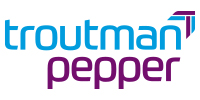WASHINGTON, D.C. — Millions of student loan borrowers finally have new options to manage their debt. The U.S. Department of Education has reopened two critical repayment plans—Pay As You Earn (PAYE) and Income-Contingent Repayment (ICR)—amid ongoing legal battles over the Biden-Harris Administration’s broader efforts to provide loan relief. For borrowers struggling to make ends meet, this move provides a much-needed financial lifeline—though its significance reaches well beyond individual bank accounts.
“The Department continues to defend in court the authority to cut payments for borrowers with high debts and low incomes through the SAVE Plan,” stated U.S. Under Secretary of Education James Kvaal. “In the meantime, we are making more options available to low-income borrowers, teachers, servicemembers, and other public servants so they can make the best choices for their financial situation.”
Why It Matters
At its core, the reopening of PAYE and ICR introduces more flexibility for those navigating the aftermath of significant changes in student loan repayment systems. Both plans are income-driven repayment (IDR) tools, allowing monthly payments to be calculated based on a borrower’s income and family size. These programs, particularly life-saving for public servants working toward Public Service Loan Forgiveness (PSLF), relieve some financial pressure while borrowers build a career or manage other obligations.
For borrowers enrolled in the recently enjoined SAVE Plan, this reopening offers a critical chance to earn PSLF and IDR credits—something that has been placed on hold due to court rulings. Under current Department guidelines, SAVE Plan borrowers are in temporary forbearance, meaning no payments are due, and interest has been paused. However, these months don’t count toward PSLF or forgiveness under IDR. PAYE and ICR could change that by allowing borrowers to restart progress toward these goals.
Understanding the PAYE and ICR Plans
PAYE is particularly beneficial for borrowers with limited income. Payments under PAYE are calculated at 10 percent of income exceeding $22,590 for individual borrowers or $46,800 for a family of four. Borrowers within these thresholds pay nothing.
ICR, originally introduced in 1996, uses a more flexible formula to accommodate a wider range of incomes. Borrowers making under $15,060 annually as individuals—or $31,200 for families of four—qualify for $0 monthly payments. For borrowers with low debt compared to their income, ICR may offer lower monthly payment options compared to other plans.
Complicated Legal Terrain
This policy reversal didn’t emerge in a vacuum. Last summer, the Department initially closed both PAYE and ICR to new enrollments, citing the expanded coverage and lower rates available through the SAVE Plan. However, with the SAVE Plan now stuck in a web of legal challenges—driven by lawsuits opposing its implementation—the Department is scrambling to provide alternatives. The reopened repayment plans represent a temporary bridge for borrowers caught in the crossfire of these legal disputes.
Critics of the Biden-Harris Administration’s student loan approach have long argued that its relief initiatives overreach executive authority, creating uncertainty for millions. Supporters counter that expanding repayment options and reducing financial strain are crucial steps toward equity. The reopening of PAYE and ICR reflects a compromise meant to offer relief while awaiting judicial resolutions on broader loan forgiveness efforts.
Borrower Impact
The Department’s decision is not just bureaucratic maneuvering—it’s a real lifeline for those facing the harsh realities of student loan repayments. Public servants in particular, including teachers, healthcare workers, and active-duty military, stand to benefit from low payments while working toward PSLF eligibility.
Borrowers eager to enroll can submit applications through StudentAid.gov. The Department promises a streamlined process for applicants, including logging in to upload tax returns or other proof of income. Loan servicers, however, are reportedly stretched thin, and processing delays could trigger temporary “processing forbearance” for up to 60 days. Crucially, these forbearance periods will still count toward PSLF and IDR forgiveness timelines.
What’s Next?
The PAYE and ICR plans will be open to new enrollment until July 1, 2027, granting borrowers a window of time to evaluate their repayment strategies. Meanwhile, the larger battles over student loan relief rage on, leaving advocates and detractors impatiently awaiting court decisions that could reshape the future of federal repayment policy.
For now, the Department of Education’s move is a significant attempt to address the chaos inflicted on borrowers. Is it enough? That remains to be seen. What’s clear is that the debate over student loan debt is far from resolved, and those with loans should act fast to secure the repayment plan that best protects their financial future.
Today’s economic climate demands action. For millions of Americans, choices like PAYE and ICR may mean the difference between financial stability and growing debt. The message from the Department is clear—take advantage of these plans while they’re available. The stakes couldn’t be higher.





